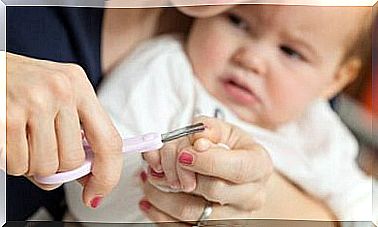7 Tips To Avoid Aggressive Behavior In Children

There are many ways to avoid aggression in children. But, the key to all of them is to know what constitutes aggressive behavior and why parents must never lose control in the midst of a tantrum.
Much more than a simple expression of anger, aggression in children can be a sign of underlying frustration, fear or sadness. As parents, we should be aware of our children’s emotional needs, and provide them with the healthy and supportive environment they need to thrive.
To determine if your child is aggressive or not, observe his or her behavior. For example, if your child intentionally seeks out ways in which he or she can cause physical or mental harm to other children, or even their own parents, there is aggression.
To identify patterns of aggressive behavior in children, keep in mind that any and all deliberate, violent acts are signs of a problem that requires attention. It includes kicks, scratches, bites, screams or dirty language.
There are many ways to help a child deal with his aggressive behavior. Here are 7 tips to avoid aggression in children:
7 tips for channeling aggression in children
Build an atmosphere of trust
Try to open up channels of communication with your child. Build an atmosphere of trust and respect at home. That way, your child will have the confidence to express his feelings freely, without fear of being criticized or punished.
This familiar and soothing environment will allow your baby to get his feelings out of his breast. The feeling of being fully understood and listened to, in the safety of your own home, will help your child to leave his aggressive behavior behind.
If your child begins to express his feelings, take this opportunity to explain that it is perfectly normal to get annoyed, or angry, sometimes. Pointer also that violence does not solve any problems.

2. Find the source of their aggression
To find the source of the aggression, start by observing how your child is behaving.
The idea is to find out what is causing your child’s aggressive behavior. You may be surprised at what you find out. A typical cause of aggression in children is low self-esteem.
You may also find that your child responds to the arrival of a little brother or sister. Feeling unloved, or lacking in care, can cause your child to try to get your attention in all the wrong ways.
3. Respond immediately to confront aggressive behavior
When your child’s aggressions affect those around them, especially other children, intervention is necessary. At this point, reach out to your child. Otherwise, their aggressive behavior may be to blame for him or her being rejected by his or her peers in the future.
By helping your child channel his or her emotions in a healthy way, it will be possible for him or her to replace the violence with a more rational behavior. Do not underestimate your child: if you wait for the problem to get worse, it will only get harder to take action.
Take action as soon as you see your child become frustrated or angry. If you notice one of your children hitting or biting a sibling, or other children, or even an adult, stop this behavior immediately. Get your child to see that this is not helping.
4. Find a way to create success every day
We all know the power that words possess over us. One type of word can build self-confidence, just as a bad remark can undermine it. Imagine how raising children, with emotional intelligence, can do for their future perspective.
Therefore, to help deal with aggression in children, you need to strengthen the positive values. Teach your child to express your feelings in an appropriate way. Praise him or her for his or her accomplishments. Make your child feel successful.
A great way to do this is to praise your child for the effort he or she makes, as well as the results. When your child saves his bed in the morning, you can tell how well a piece of work he or she has done.
Let your child know that you value his or her work. If there is something you need to fix, do it after praising the hard work. That way, your child will be more receptive to your feedback.
5. Be a role model for your child
Parents should never be aggressive towards their children. If you yell at your child, you are less likely to understand what you need to say.
Advice, or harsh words, will only make children more defensive. Worst of all, when children grow up in such environments, they assume that it is the right way to express themselves.
If children see their parents shouting instead of talking, and if any argument ends up with someone slapping their palm down on the table, or storming out the door, this is exactly what they will imitate in the future when they lose their patience .
For this reason, it is crucial to practice what you teach as a parent so that you can make your expectations of your child completely clear.

6. Stay calm in the aggressive episodes
When your child is aggressive towards a family member or friend, stop them and separate them from that person. A moment of alone time will help children reflect on what they have done.
If your child is violent towards you, leave him or her alone. Keep in mind that this is an explosion of built-up emotions. Arguing and clarifying with them will not help until he or she has fallen down.
Once the moment has passed, talk to your child and explain that this behavior is not acceptable. Give your child alone time in his or her room so he or she has time to reflect. If corrective action is needed, practice them as early as possible.
7. Seek a specialist if you need help
If you have tried these tips and your child is still behaving aggressively, it is time for your child to talk to a therapist. The professional will be able to identify the cause of the aggressive behavior, and help your family deal with it.









